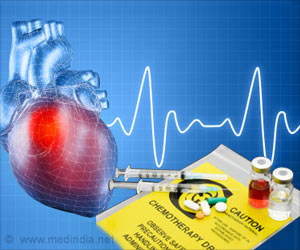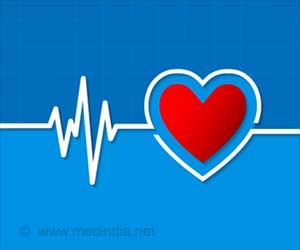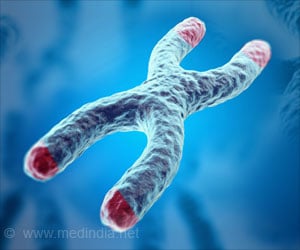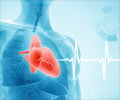- A new computer simulation procedure nicknamed OPTIMA has been discovered
- It creates simulations of damaged atria producing erratic electrical signals
- The novel OPTIMA procedure guides surgical ablation of damaged atrial tissues
- This could become an effective treatment for common heart rhythm disorders
The study is a project under the Johns Hopkins University Alliance for Cardiovascular Diagnostic and Treatment Innovation (ADVANCE), which facilitates the development of innovative biomedical tools for cardiovascular interventions.
This proof-of-concept study, published in Nature Biomedical Engineering, is a major achievement in the development of computer simulation-driven treatments for cardiac ailments. This will greatly expedite the implementation of an USFDA-approved clinical trial of the new technology, which is planned to begin later this year.
Read More..
Study Team
The study was led by Dr. Natalia Trayanova, PhD, FAHA, FHRS, who is the Murray B. Sachs Professor in the Department of Biomedical Engineering at Johns Hopkins University School of Medicine, Baltimore, MD, USA.The senior author of the paper was Dr. Hugh Calkins, MD, who is the Catherine Ellen Poindexter Professor of Cardiology and Director of the Electrophysiology Laboratory and Arrhythmia Service at the Johns Hopkins Hospital, Baltimore, MD, USA.
Atrial Fibrillation & its Complications
Atrial fibrillation is a cardiac abnormality characterized by irregular electrical activity originating from the upper chambers of the heart i.e., the left and right atrium. This leads to irregular heartbeats or arrhythmias, which affect 1-2 percent of the world’s population. In the absence of prompt treatment, atrial fibrillation can cause strokes, which can be life-threatening.Atrial fibrillation is conventionally treated by catheter ablation. However, many patients don’t benefit from this standard procedure as they exhibit persistent atrial fibrillation due to the generation of abnormal electrical signals from other sites in the atrium, besides the tissue adjacent to the pulmonary veins, where the erratic electrical activity usually originates. As a result, multiple procedures are required, which leads to progressive scar tissue formation, causing extensive atrial fibrosis. This makes it extremely difficult for the surgeon to target the affected tissue emitting the abnormal electrical signals.
How Does Computer Simulation Help?
Computer simulation helps by guiding the ablation procedure so that the specific tissue can be targeted. This new procedure is called Optimal Target Identification via modeling of Arrhythmogenesis (OPTIMA). It utilizes contrast-enhanced MRI scans to create personalized digital replicas of the diseased atrial tissue. In the present study, personalized digital replicas of the diseased atria were created based on MRI scans of ten patients from Johns Hopkins Hospital.“The personalized digital replicas allowed us to accurately simulate and analyze heart electrical activity in ten patients and determine where tissue needs to be destroyed,” says Trayanova. She adds: “The beauty of working with such replicas is that we could test for and predict where irregular heartbeats persist in ways we never could in the clinic. We ran a mock of the clinical procedure over and over again, until we were sure irregular beats will not re-emerge.”
A major advantage of this approach is that it has the potential to eliminate the process of trial-and-error in treating heart rhythm disorders and preventing the need for repetitive ablative procedures.
Key Features of the OPTIMA Procedure
The novel OPTIMA procedure, which uses computer simulation to create personalized digital models of the diseased atria, exhibits the following key features:- High Predictive Power: OPTIMA is capable of accurately predicting the exact location of the abnormal electrical activity in the atria
- Elimination of Repetitive Ablations: Each ablation results in reconfiguration of the electrical activity, giving rise to new arrhythmias in various locations within the atria. OPTIMA can alleviate the need for repetitive ablations by performing virtual ablations until no new arrhythmias occur
- Guidance of Ablative Surgery: OPTIMA is capable of generating ‘maps’ of affected atrial tissue, which helps to guide the catheter, thereby enabling the surgeon to ablate the correct tissue area
- ‘All-in-One’ Operation: Computer simulation by OPTIMA allows surgeons to simultaneously ablate current areas of abnormal electrical activity, as well as areas where erratic electrical firing is likely to occur in the future
- Prevention of Recurrence: The efficacy of the OPTIMA procedure is very high, as recurrence of arrhythmias does not occur. In the present study, atrial fibrillation did not recur in any of the patients during the 300-day observation period
- Duration of Procedure: The whole OPTIMA procedure – from obtaining the MRI scans to the generation of the ‘maps’ and the actual surgical ablation – takes around one week. The research team aims to reduce the time by one day
Concluding Remarks
“I’m very optimistic that this personalized simulation-driven approach will prove to be the missing link needed to markedly improve catheter ablation outcomes in patients with more advanced forms of atrial fibrillation,” says Calkins.“This new approach may transform current approaches to catheter ablation of atrial fibrillation.”Trayanova concludes: “This success is an exciting example of how engineering technology can be used in the clinic to help make treatment more accurate and spare patients from multiple, costly and sometimes risky procedures.”
Funding Source
The study was funded by several funding agencies, organizations, and foundations. Some of these include the National Institutes of Health, the American Heart Association, the National Science Foundation, the Fondation Leducq, the Dr. Francis P. Chiaramonte Foundation, the Norbert and Louise Grunwald Cardiac Arrhythmia Research Fund, the Roz and Marvin H. Weiner and Family Foundation, and Biosense Webster Inc. (Irvine, California), among others.Reference:
- Computationally guided personalized targeted ablation of persistent atrial fibrillation - (https://www.nature.com/articles/s41551-019-0437-9)
Source-Medindia
















